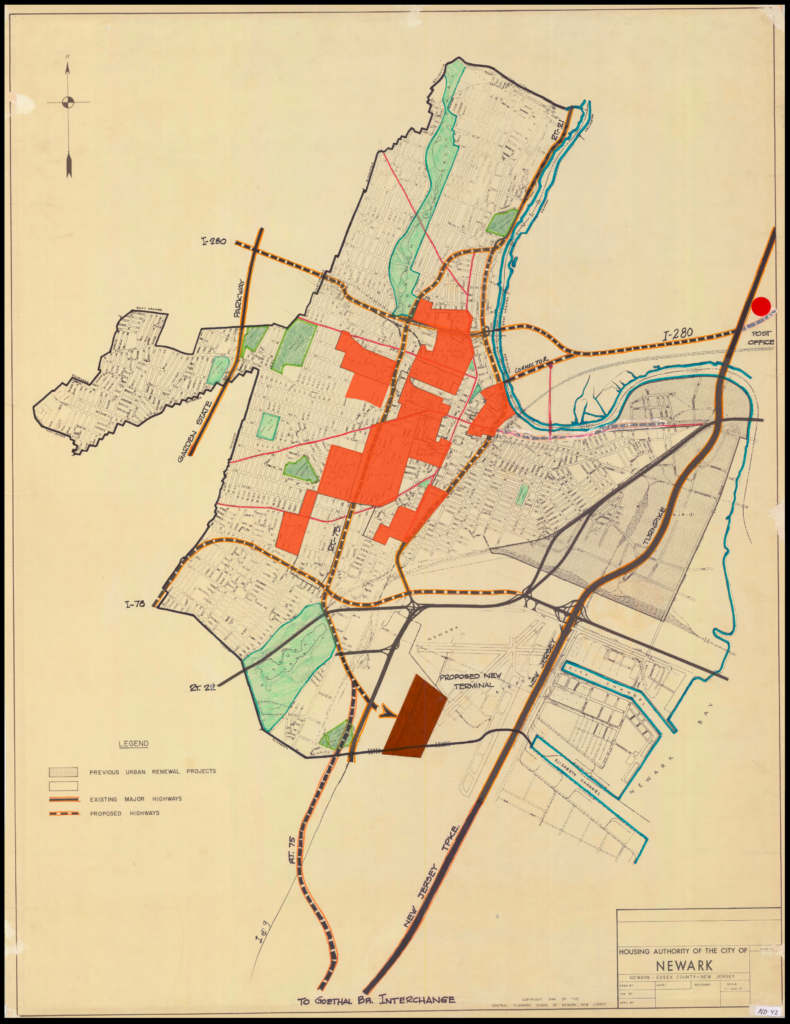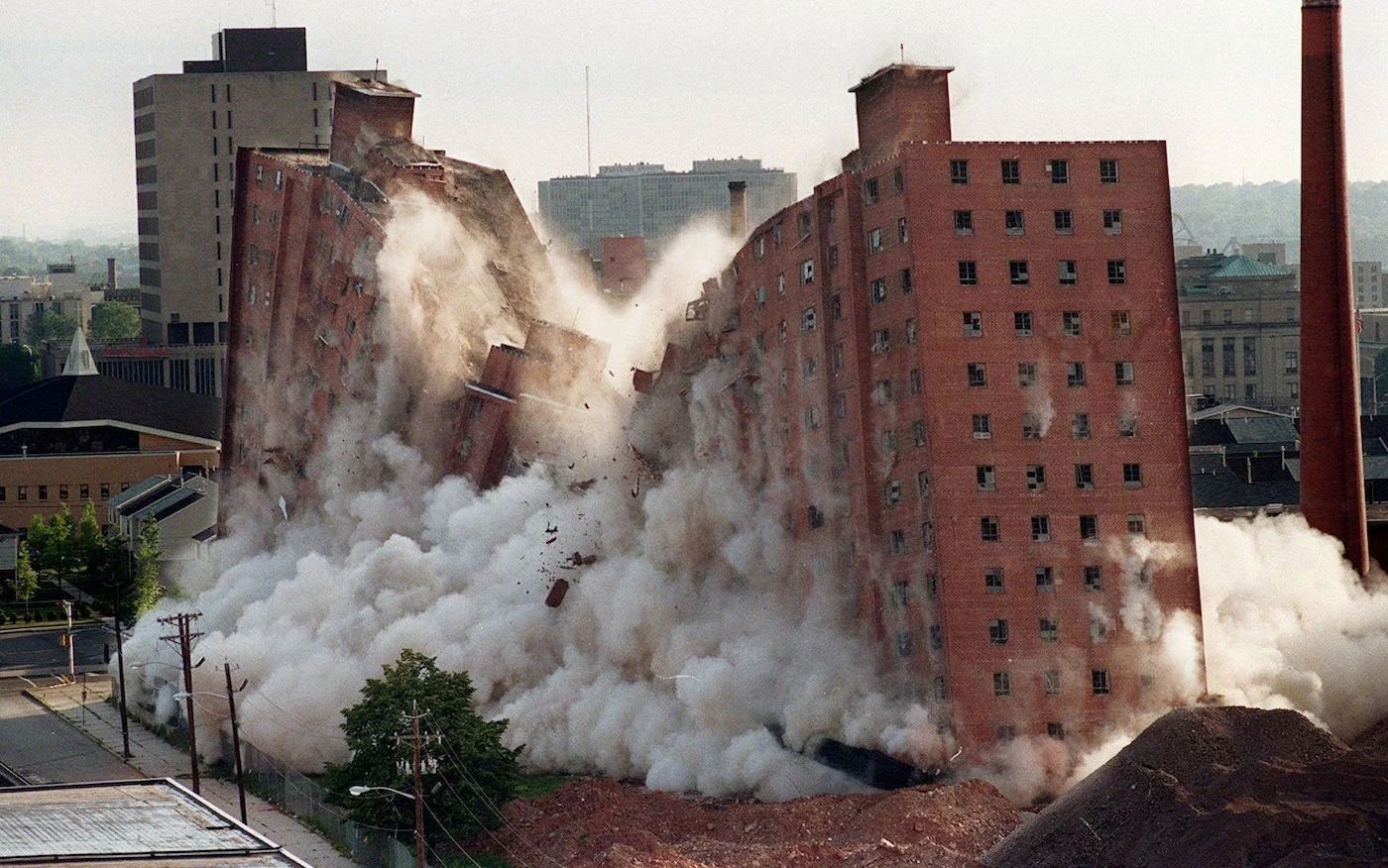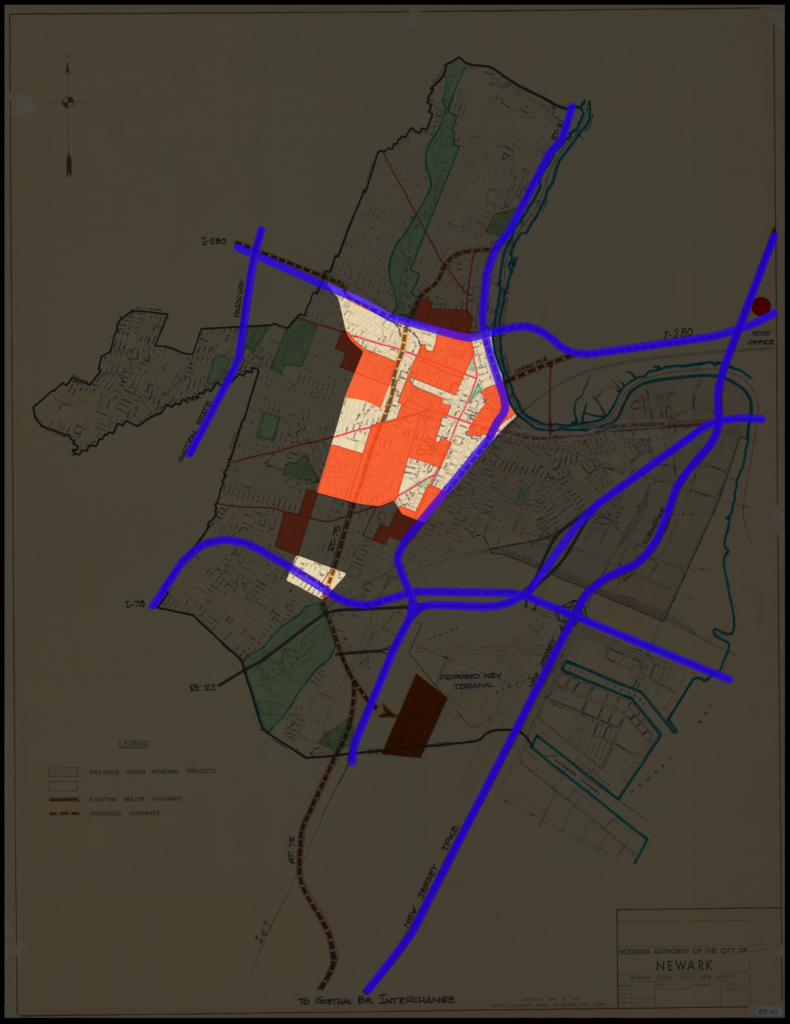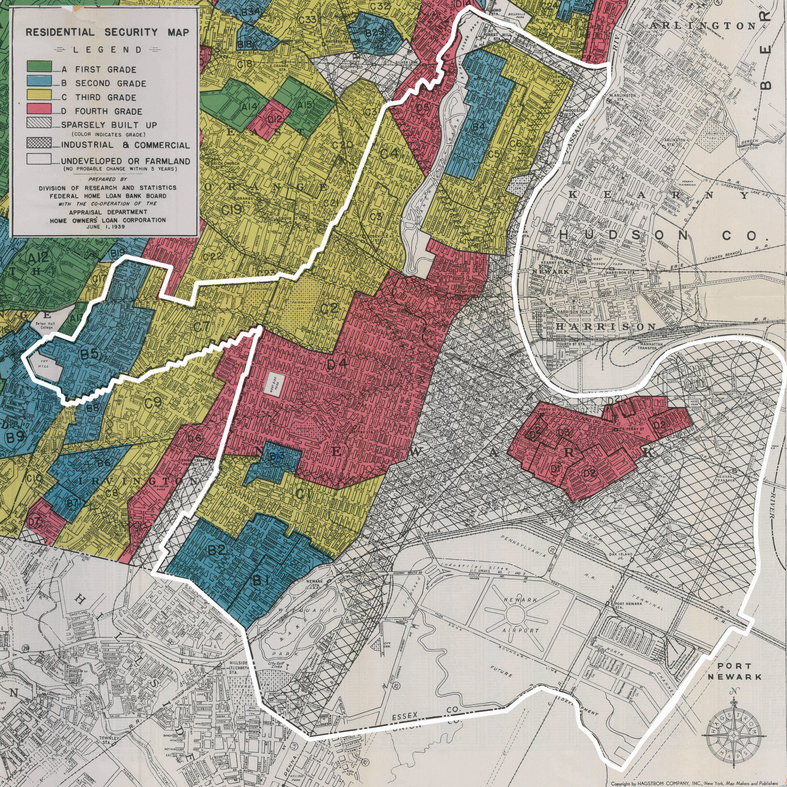
‣ Click icons for thumbnail images.
‣ Click thumbnails for photo comparison with contemporary Google street view.
‣ Thumbnails launch photo comparison on new page.
If you see this after your page is loaded completely, leafletJS files are missing.
Map color key accurate as of summer 2022.
Map will be updated as the city continues changing.
A visual record of urban renewal
From the 1940s to the present day, the majority of Newark neighborhoods witnessed population loss and demolition. With the approval and encouragement of politicians and public servants, Newark’s human scale architectural fabric of 19th-century neighborhoods was leveled by real estate developers and institutional actors. Between the University of Medicine and Dentistry (now closed), Rutgers University, Newark College of Engineering, Newark Housing Authority, and the Interstate Highway Act, hundreds of millions in taxpayer money was spent urban renewal projects. This resulted in the demolition of at least 10,000 buildings in Newark, which displaced 50,000 people. Of those displaced, 65 percent were people of color, and the majority were poor and working class (source).
The violence of urban renewal is painfully imprinted on the urban form in photos and maps of disappeared neighborhoods. From 1959 to 1968 medical doctor and amateur photographer Samuel Berg documented the streetscapes of Newark in 2,600 photos. Dr. Berg knew the city was in the process of self-destruction, and he set out to document the city as generations of Newark residents had known it. This collection is a valuable key to history, a key to documenting the appearance of neighborhoods years, sometimes weeks and hours, before their demolition.
This website displays all 2,400 of Dr. Berg’s photos on an interactive map, accompanied by contemporary street views of every place he visited taken from identical camera angles. How have the forces of urban renewal changed the city’s buildings and the histories and peoples they contain? What benefits have the sacrifices of these neighborhoods for institutional uses given Newark? How can institutional actors confront histories of racial and spatial violence imprinted on the cities they are now rebuilding?
This project has two goals: To inform the public about the histories of their individual buildings and neighborhoods; to motivate preservation of what remains through historical awareness of what was lost. As Newark faces gentrification and as Newark’s oldest neighborhoods again feel redevelopment pressures, new development must respect and contribute to history in ways that the precedent of past projects have not.
Research Method and Credits >
Frequently asked questions about this project.
The death of a government-led program of urban renewal: One of the two remaining 13-story buildings at the Edward W. Scudder Homes complex implodes on June 8, 1997 as part of the Newark Housing Authority’s demolition of public housing.
.
These four maps convey the scale of destruction.
Source from Newark Public Library
1. Extent of “slum” clearance and proposed interstate highway construction by the 1960s:
 Showing highways existing and proposed. Note: Route 75 connector shown slicing through Central Ward and North Ward was never built.
Showing highways existing and proposed. Note: Route 75 connector shown slicing through Central Ward and North Ward was never built.
2. Racial dot map of black neighborhoods (blue). and white neighborhoods (green). reveals that “slum” clearance was concentrated in black neighborhoods:
3. Area of focus in Dr. Berg’s photos:
 Isolated area to south is neighborhood demolished for Interstate 78. Area to northwest was demolished for Interstate 280.
Isolated area to south is neighborhood demolished for Interstate 78. Area to northwest was demolished for Interstate 280.





